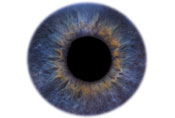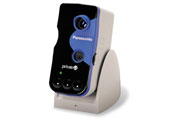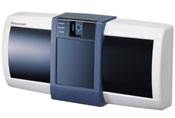Difference between revisions of "Ashwina Soekhoe"
Jump to navigation
Jump to search
| Line 32: | Line 32: | ||
== Current Use == | == Current Use == | ||
According to Lina Page, Director of Marketing for Iridian Technologies, "Iris-recognition success stories include restricted-access solutions in airports and nuclear power plants, and work is underway to implement the technology at border crossings and customs checkpoints. Your iris is already your passport in the Netherlands and Canada, where trusted travelers can bypass lengthy customs and immigration lines by enrolling in a fastpass program for a small fee. | |||
== Future Perspectives == | == Future Perspectives == | ||
Japan is testing iris recognition in airline ticket kiosks." Future developments might lead iris recognition into shopping malls, ATMs, maybe even the local convenience store. "Eye-d?" | Japan is testing iris recognition in airline ticket kiosks." Future developments might lead iris recognition into shopping malls, ATMs, maybe even the local convenience store. "Eye-d?" | ||
Revision as of 15:43, 21 March 2006
Work in progress....
Product of the future: Iris Scanner - Identification Tool
 |
| Identification through Iris Scanning |
Intoduction
The Product
Current Use
According to Lina Page, Director of Marketing for Iridian Technologies, "Iris-recognition success stories include restricted-access solutions in airports and nuclear power plants, and work is underway to implement the technology at border crossings and customs checkpoints. Your iris is already your passport in the Netherlands and Canada, where trusted travelers can bypass lengthy customs and immigration lines by enrolling in a fastpass program for a small fee.
Future Perspectives
Japan is testing iris recognition in airline ticket kiosks." Future developments might lead iris recognition into shopping malls, ATMs, maybe even the local convenience store. "Eye-d?"


